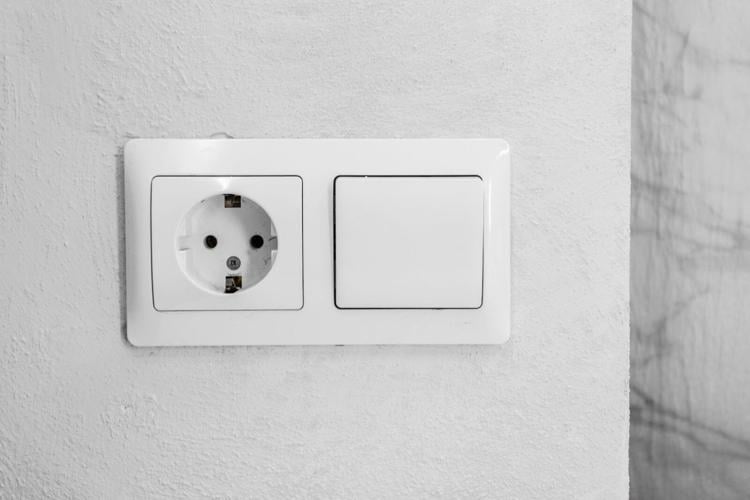
Walk into any modern home, and you’ll quickly notice one thing: devices everywhere. Phones, laptops, speakers, kitchen appliances — and they all need power. But here's the thing — most houses weren’t built with this level of tech in mind. This explains why so many people eventually require additional outlets.
At first glance, installing outlets seems easy, but it involves more than merely drilling a hole in a wall and picking a random location. The process of installing outlets today creates immediate convenience while preventing future complications. With help from a reliable team like Fuse Service, you can do it right the first time — safely, smartly, and within your budget.
Think About What You Need — Now and Later
Start by looking at how your household actually uses power. Do you always find yourself unplugging something just to charge your phone? Does your kitchen feel like a war zone of extension cords when cooking dinner?
Make a list of areas where outlets are constantly in use or completely missing. For example, a home office might need more than just one or two plugs — you’ve got a monitor, computer, printer, lamp, maybe even a second screen. And what about your living room? TV, speakers, router, consoles — it adds up fast.
Also, take a moment to think ahead. Planning to get an electric car? Thinking of adding smart lighting or a home assistant? It’s easier (and cheaper) to install outlets now than to redo everything later. Not sure how to plan all this? That’s where a licensed electrician in Santa Clara can really help.
Safety First: Don’t Overload the System
You might think, “More outlets = more convenience.” True, but every home has its electrical limits. Overcrowding an already crowded circuit with outlets can lead to hot wires, tripped breakers, and even possible fire threats.
Checking your electrical panel is so essential. How much electricity is safe for your house? If it’s an older panel, you may need an upgrade before adding anything new. And then there’s the question of where the outlets are going. Kitchens, bathrooms, laundry rooms — any place with water nearby needs GFCI outlets. These help protect you from shocks if something goes wrong.
The safest option? Have a professional from Fuse Service take a look. They'll make sure everything’s up to code and done properly.
Placement Matters More Than You Think
Where you put your outlets can make a big difference. Ever tried charging your laptop and had to stretch the cord across the room? Or wished there was an outlet by your bed instead of behind it?
In kitchens, for instance, it's smart to have outlets just above the counter, not below or hidden. In the living room, outlets behind the TV stand keep wires tucked away. And don’t forget hallways or entryways — you’d be surprised how often those get overlooked.
Also, keep in mind who’s using the space. If you’ve got kids or elderly family members, think about outlet height and how easy they are to reach. Accessibility matters, and a bit of extra thought goes a long way.
Upgrade to Smart or USB Outlets
Let’s be honest — wall warts and bulky adapters are a pain. If you’re already updating your outlets, why not go a step further?
USB outlets are great for bedrooms, offices, and kitchens. You can plug in phones and tablets directly — no need to hunt for the charger. Then there are smart outlets, which can be controlled by your phone or voice assistant. Want to turn off your coffee maker from bed? Done.
These solutions enable you to conserve energy while minimizing clutter and achieving modernization of your space simultaneously. If you want to know what options are available, speak with an expert — Fuse Service electricians can explain your choices.
What About Costs and Permits?
The following section deals with the less enjoyable aspect of budgeting. The cost of upgrading depends on several factors, including the number of outlets you want to add and the types of outlets you select (standard, GFCI, smart) and whether any wiring or panel upgrades are required.
Also, in many places, you’ll need a permit to do electrical work. It’s not just red tape — it’s there to ensure everything meets safety codes. Skipping the permit can cause trouble if you ever sell your home, and in some cases, you could face fines.
That’s another reason to work with a trusted provider like Fuse Service. They’ll handle all the paperwork, make sure everything’s legal, and give you a clear idea of the total cost up front.

Think about what you use every day first. And once you know your home's power knockout point, make the smart choice in placement, consider new-age modern features such as USB ports and smart controls, and work with the pros who are code-savvy.
Your extensive experience with repairs and light DIY work does not eliminate the need to consult electricians who can verify that your small fixes and major updates will not endanger you or lead to errors. The goal extends beyond electricity to protect your home from future damage.



(0) comments
We welcome your comments
Log In
Post a comment as Guest
Keep it Clean. Please avoid obscene, vulgar, lewd, racist or sexually-oriented language.
PLEASE TURN OFF YOUR CAPS LOCK.
Don't Threaten. Threats of harming another person will not be tolerated.
Be Truthful. Don't knowingly lie about anyone or anything.
Be Nice. No racism, sexism or any sort of -ism that is degrading to another person.
Be Proactive. Use the 'Report' link on each comment to let us know of abusive posts.
Share with Us. We'd love to hear eyewitness accounts, the history behind an article.